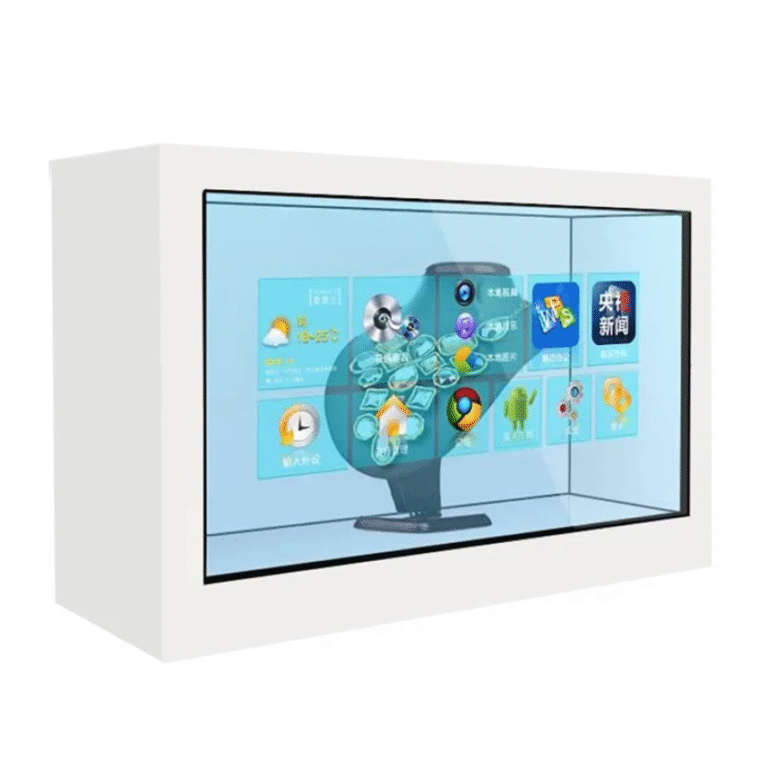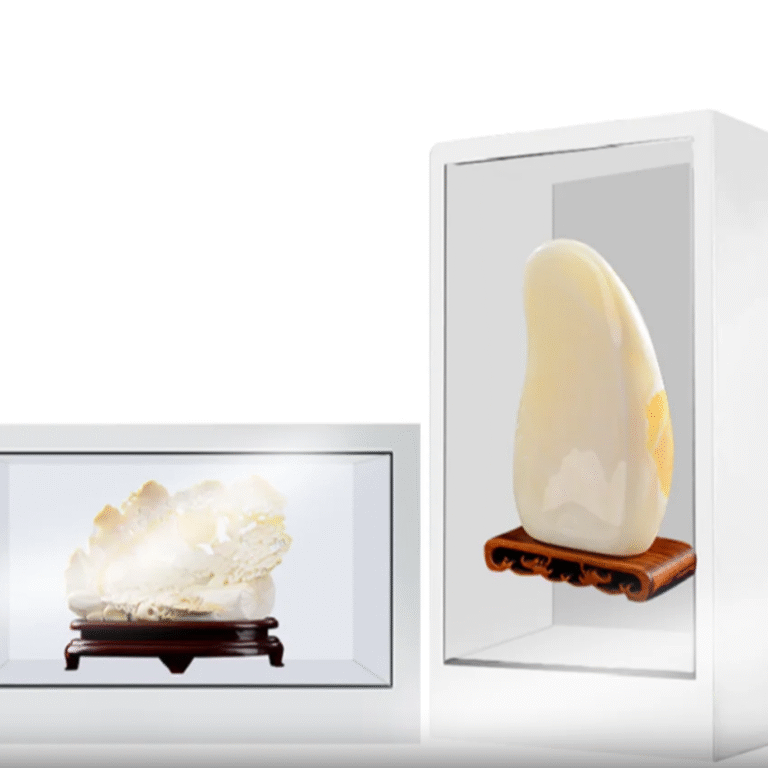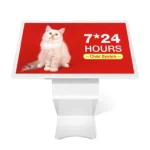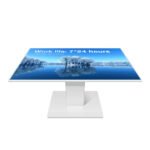How Can You Use 3D Screen Mesh to Create Stunning Hologram Effects in Digital Signage?
The Dawn of Immersive Digital Signage: Introducing 3D Screen Mesh Technology
In the increasingly saturated world of out-of-home advertising, capturing and holding customer attention is paramount. Traditional 2D displays, while effective, are now simply the baseline. This is precisely why forward-thinking digital signage product users are turning to cutting-edge technologies like 3D screen mesh for holograms to deliver truly spectacular visual experiences. This innovative material, often an ultra-fine, highly transparent netting, represents a significant leap forward. It acts as a specialized projection surface, meticulously engineered to reflect light in a way that generates the stunning illusion of a 3D hologram floating convincingly in mid-air. For the digital signage industry, this is not just an upgrade; it is a fundamental shift toward immersive, unforgettable communication. By understanding how to use 3D screen mesh for holograms, brands can transform their displays from passive screens into dynamic, volumetric showcases that stop foot traffic and significantly boost audience engagement. This sophisticated mesh technology is quickly becoming the definitive solution for brands aiming to differentiate themselves and establish a high-tech, memorable presence in crowded commercial spaces.
Deconstructing the Illusion: The Core Mechanics of 3D Screen Mesh for Holograms

Achieving a genuine, glasses-free 3D hologram effect using screen mesh hinges on the ingenious application of specialized material and precise optical physics, often drawing upon the principles of the classic Pepper’s Ghost illusion but adapted for modern digital projection. The core principle relies on the 3D screen mesh being exceptionally thin and translucent—often having a transparency level of 70% to 95%. This unique composition is crucial because it allows the display to appear almost invisible under the right conditions. The success of this system depends on the harmonious interaction between four key elements.
The Critical Components and Setup Requirements
To successfully deploy this holographic effect, several components must work in perfect synergy:
- The Specialized 3D Screen Mesh: This is the core material. Its microscopic structure allows a significant amount of ambient light and background objects to pass through, maintaining a “see-through” effect. Simultaneously, its surface is treated to selectively reflect light from a high-lumen projector. The material is typically flexible, lightweight, and can be tensioned across large frames, which is a major logistical benefit for large-scale installations.
- High-Lumen Projectors: Due to the material’s transparency, a powerful, high-definition projector is absolutely necessary. It must be strategically positioned, usually either above or below the mesh and angled precisely, to beam the content onto the screen. This strategic angle ensures the projection light bounces back effectively towards the audience without casting a visible shadow or spill. The projector’s brightness must overcome any ambient light in the room to make the reflected image vibrant.
- Holographic Content with Black Backgrounds: Perhaps the most important element is the video content itself. It is specifically created with a pure black background. When projected, the black parts of the image pass right through the transparent mesh and are essentially invisible to the viewer. Conversely, the bright, vibrant colored elements of the image are strongly reflected by the mesh. This contrast ensures that the reflective parts of the image appear to be suspended in the air, creating the powerful illusion of a volumetric, 3D hologram.
- A Controlled Environment: While some advanced meshes can handle variable lighting, optimal results require a relatively controlled environment, such as an indoor space, or a slightly dimmed or shaded area, to maximize the contrast. Minimizing light sources shining onto the mesh from the audience’s side prevents the mesh material itself from becoming visible.
The Magic of Reflection and Transparency
When the specialized content hits the mesh, the illusion is completed. The reflected image seems to materialize in front of or behind the screen, fooling the viewer’s depth perception. Because the mesh is nearly invisible, the floating image is perceived as an actual 3D hologram, an object that exists in space without a visible screen or enclosure. Furthermore, because the mesh is flexible and lightweight, large, expansive holographic stage setups can be constructed quickly and temporarily, making them perfect for high-impact retail campaigns and product unveilings. Ultimately, the successful deployment of 3D screen mesh for holograms is a delicate balance of advanced material science, powerful projection, and expertly rendered content.
Strategic Advantages for High-Impact Digital Signage Applications

The adoption of 3D screen mesh for holograms delivers multiple, measurable benefits specifically for the digital signage market, directly addressing the pain points of low engagement and message fatigue. The technology provides a clear competitive edge, transforming standard advertising into experiential marketing.
Unmatched Audience Engagement and Recall: The ‘Stop and Stare’ Factor
The primary benefit is the sheer “wow factor” and the resulting audience engagement. A 3D hologram display is inherently more captivating than a flat screen. The perception of an object floating in space is an immediate pattern interrupt that commands attention in busy retail or urban environments. Studies consistently show that three-dimensional visuals, compared to their 2D counterparts, significantly increase audience dwell time and message retention. When a lifelike product model appears to spin mid-air, for instance, the brand association is strengthened, and the visual message is much easier to recall days later. This deep-seated memorability is invaluable for brand-building and promotion. Unlike other 3D technologies, this method doesn’t require viewers to pause or interact with a device, making it highly effective for passing traffic.
Versatility, Scalability, and Ease of Deployment
Unlike rigid or glass-based holographic systems, the 3D screen mesh is highly versatile and economical for large formats. It can be manufactured in enormous custom sizes, reaching up to ten meters in width, making it perfectly suitable for large-scale retail window displays, expansive airport advertisements, and vast trade show booths. The material is typically lightweight and can be rolled up, which drastically simplifies logistics, transportation, and rapid deployment across multiple locations. This scalability allows brands to execute unified, high-impact campaigns globally with a single, reliable technology platform. Installation is often faster than installing complex LED video walls, involving simply tensioning the mesh onto a fixed or truss-supported frame.
Elevating Brand Image and Product Showcase
Using this cutting-edge technology naturally positions a brand as innovative and technologically advanced. For product launches or high-value item promotions, the ability to showcase a feature, a new vehicle component, or a piece of jewelry as a detailed, fully realized 3D hologram provides a level of detail and excitement that flat photography or video simply cannot match. It offers a tangible presence to the digital content, encouraging customers to interact visually and emotionally with the display. The perceived value and quality of the advertised product or service are instantly elevated, fostering a premium brand image that resonates with modern, tech-savvy consumers. The display essentially acts as an anchor for the surrounding physical space.
Best Practices for Maximizing 3D Hologram Impact and ROI
To ensure a high Return on Investment (ROI) from a 3D screen mesh installation, content creators and digital signage users must adhere to specific best practices that exploit the technology’s unique visual strengths. The success of the installation is often determined in the pre-production planning phase.
Mastering Holographic Content Creation
The content must be conceived and rendered as if it is a truly three-dimensional object interacting with the real world behind the mesh. The best results come from content that utilizes the unique depth perception created by the illusion:
- Floating and Spinning: Objects should be designed to move, rotate, and interact with the perceived space, often appearing to break the invisible plane of the screen for maximum pop-out effect and engagement.
- High-Contrast and Color Focus: As the material relies on reflecting bright colors while letting dark colors pass through, content should feature bright, vivid objects against absolute black backgrounds to ensure the mesh becomes completely invisible. Avoid grey or near-black tones, which can lead to light bleed and diminish the effect.
- Simplicity and Focused Messaging: A single, large, central 3D hologram often has more visual impact than a cluttered scene. This ensures the audience’s focus is immediately directed to the key advertising message or product feature, maximizing clarity and retention.
Optimal Physical Placement and Environmental Lighting
While the mesh offers transparency, strategic physical placement and environmental control are paramount to maintaining the illusion. The mesh screen must be adequately tensioned to prevent wrinkles or creases, which can severely disrupt the image reflection and break the holographic effect. Furthermore, the light level in the viewing area needs to be meticulously managed. Direct, bright sunlight or harsh spotlighting shining on the mesh itself will completely destroy the illusion of the floating 3D hologram by illuminating the material. Subtle, directed ambient lighting in the surrounding area, however, can enhance the overall presentation without compromising the holographic effect, making the floating visuals appear even more dramatic and realistic. By carefully managing both content creation and environmental staging, the incredible potential of 3D screen mesh for holograms can be fully realized, transforming the commercial space into a powerful, memorable destination.
FAQ: 3D Screen Mesh and Holograms in Digital Signage
Q: Do viewers need special glasses to see the 3D hologram effect on a screen mesh? A: No, one of the biggest advantages of this technology is that it creates a stunning, glasses-free 3D hologram illusion, making it perfect for public digital signage applications where no specialized equipment is required by the audience.
Q: How does the 3D screen mesh maintain transparency? A: The mesh is constructed from an ultra-fine, highly transparent material that allows most ambient light and background visuals to pass straight through. The special effect is achieved because the projection content is created with a pure black background, which passes through, while the bright image content is reflected, creating the illusion of a floating object.
Q: Is 3D screen mesh suitable for outdoor digital signage? A: While traditionally used indoors or on stage, there are now specialized, durable 3D screen mesh materials designed for protected outdoor environments. However, a controlled lighting setup (like a canopy or shaded area) and extremely high-lumen projectors are essential to combat bright daylight and maintain the visual impact of the 3D hologram.




